galfidl.html
GALFIDL: IDL-tools for GALFIT decompositions
GALFIDL: IDL tools for making GALFIT decompositions
( Heikki
Salo, Division of
Astronomy ,
Department of Physics ,
University of Oulu , Finland)
GALFIDL is a set of IDL-routines designed to help making 2D
multi-component structural decompositiona with the
GALFIT software developed by Chien Peng
The primary application of GALFIDL is for the decomposition
pipeline of
The Spitzer Survey of Stellar Structure in Galaxies (S4G, PI Kartik
Sheth, NRAO)
Link to S4G pipeline 4 decomposition web page
ADS link to S4G decomposition paper Salo et al. (2015) ApJS
This page contains preliminary examples of GALFIDL output (using output files from GALFIT decompositions of S4G data; some of the figures are from
Sheth et al. 2010, submitted to PASP).
The routines (for general visualization of GALFIT decompositions + S4G specific routines)
will be added later, once the decomposition pipeline has been tested (For advance info, contact
Heikki Salo at firstname.lastname@oulu.fi)
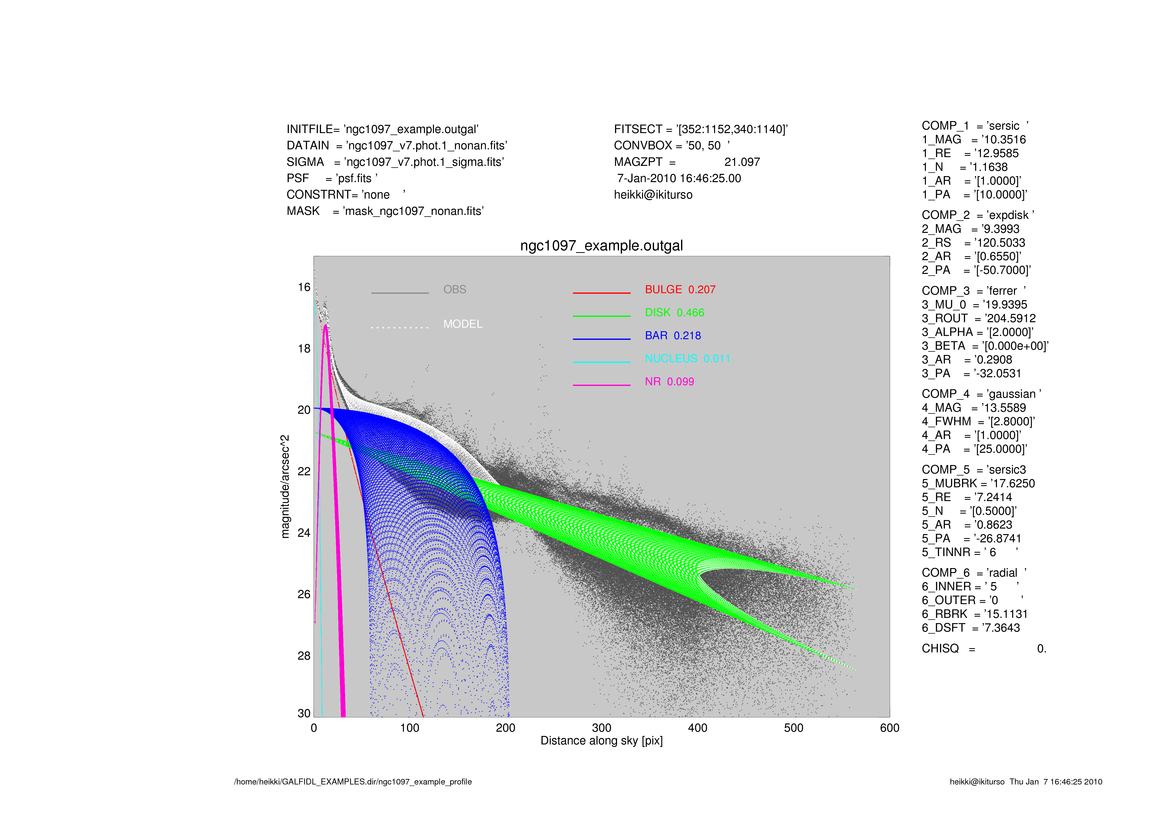
Example of 5-component GALFIT decomposition for NGC 1097 (bulge+disk+bar+nucleus+nuclear ring):
the observed (black dots) and modeled magnitude (white dots) of each pixel, against its distance from the galaxy center. Different model components
are separated by different colors; the numbers after labels indicate
the components relative contribution to total model flux (click the figure to enlarge).
.
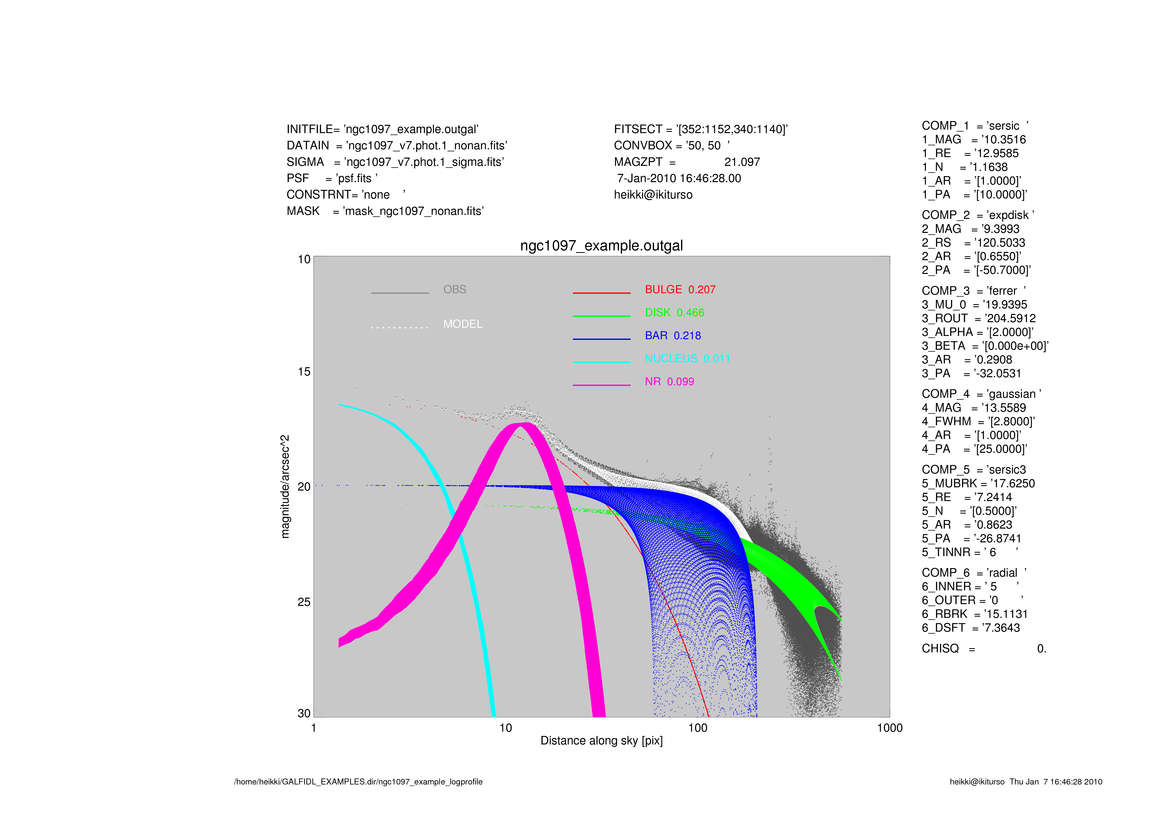
Same with logarithmic radial scale
.
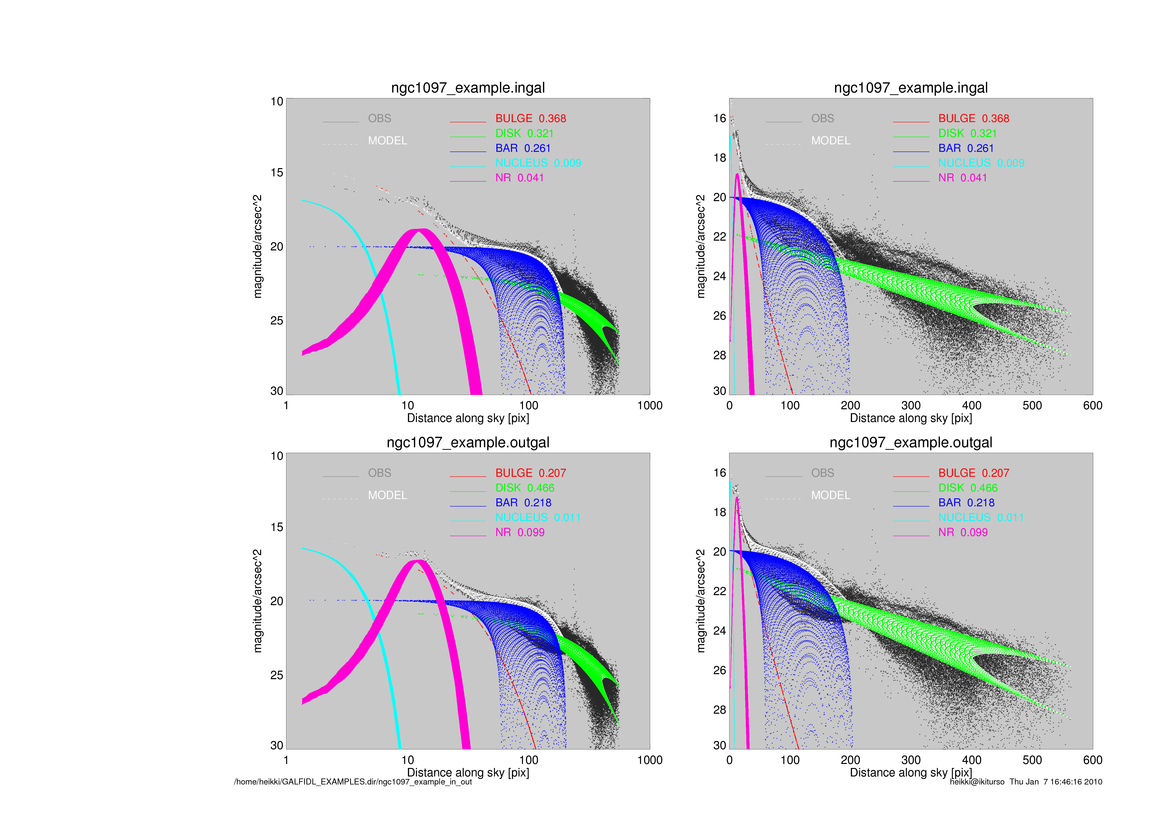
Upper row displays initital starting parameters while the final iteration results are shown in the lower row
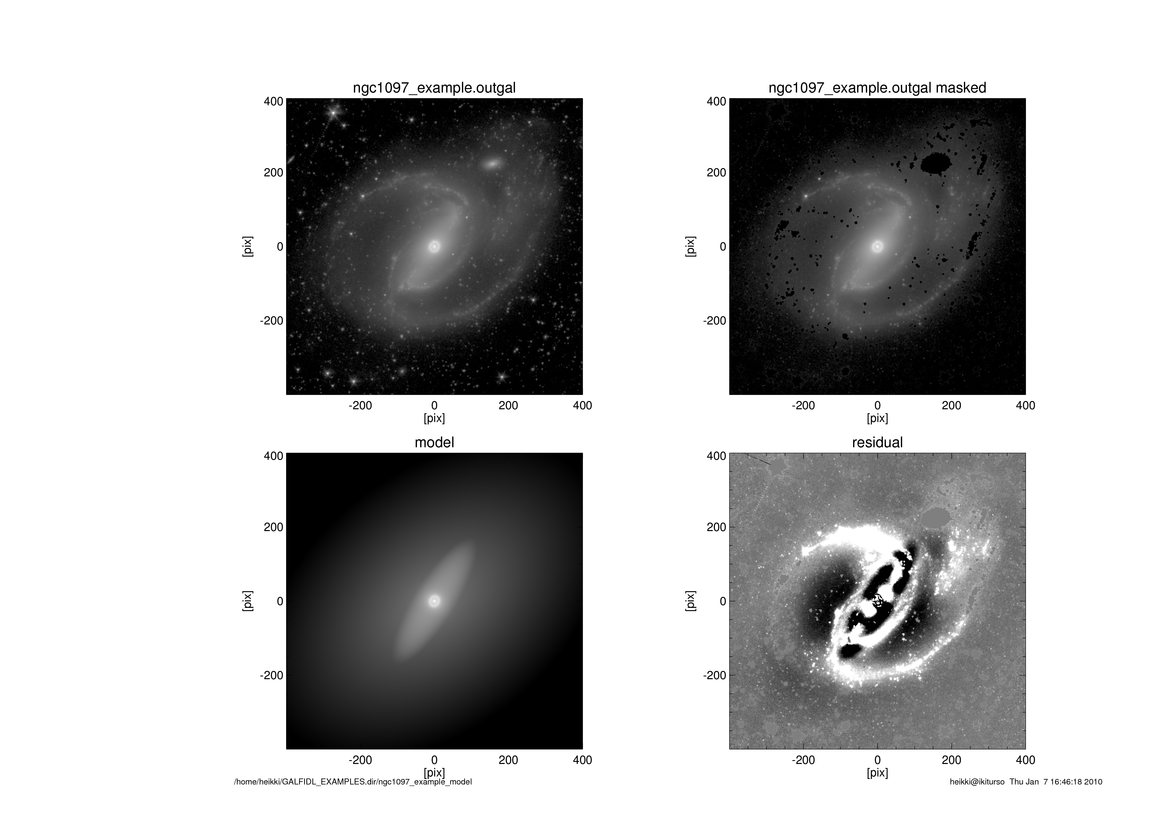
Observed image, used mask, model, residual
.
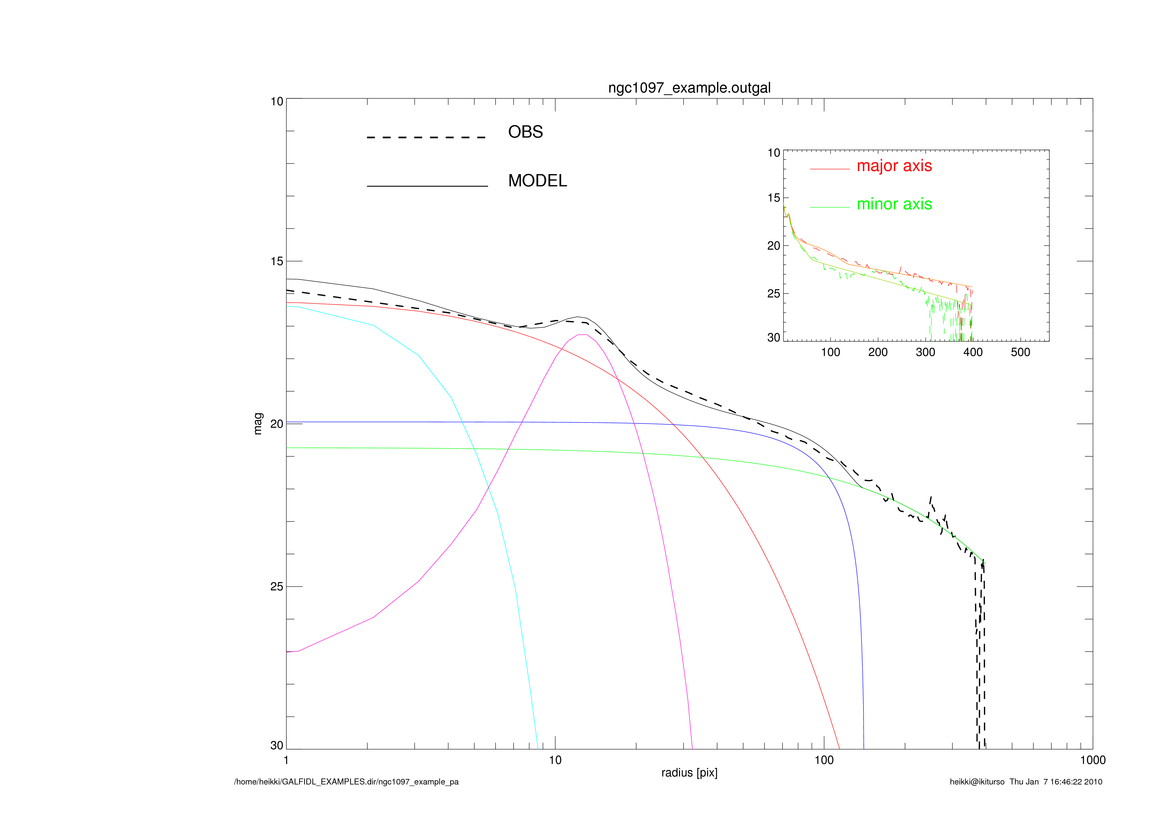
Component profiles along the disk apparant major axis
.
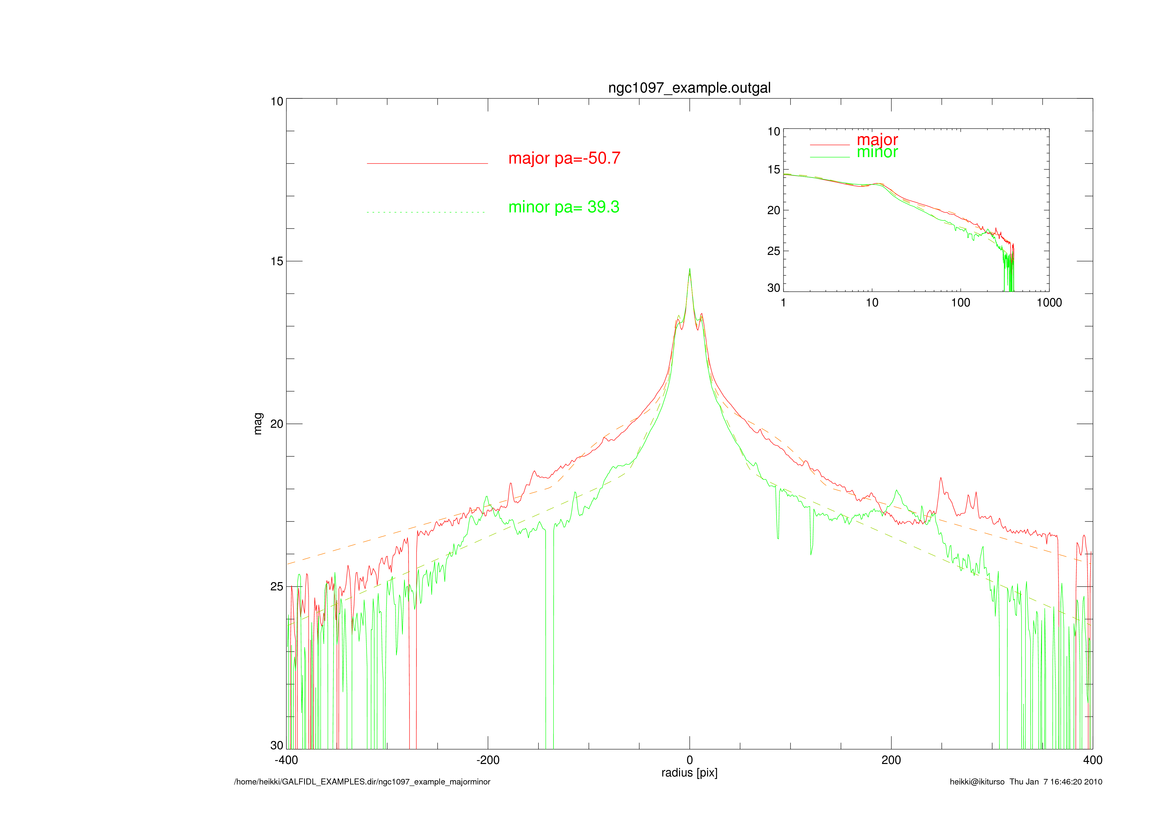
Total obs and model profiles along the disk apparant major and minor axis
.
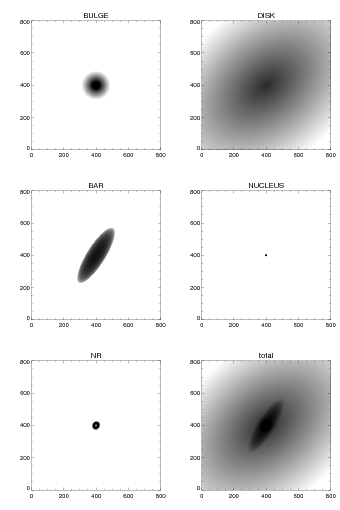
Each model component separately
.
The GALFIDL visualization routines are largely based on BDBAR (Bulge-Disk-Bar) decomposition software,
written by Heikki Salo in collaboration with Eija Laurikainen (Oulu).
Publications utilizing BDBAR
BDBAR has beed extensively in
NIRS0S Survey of Lenticular Galaxies






